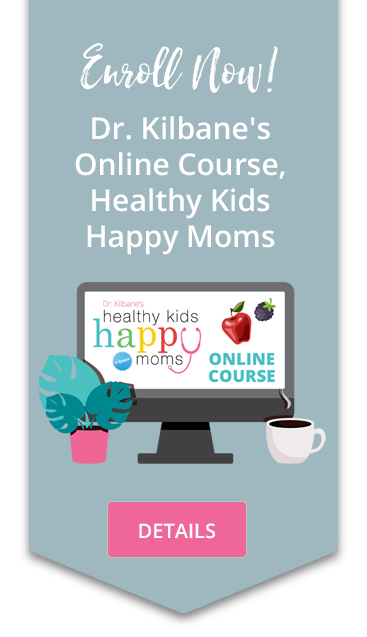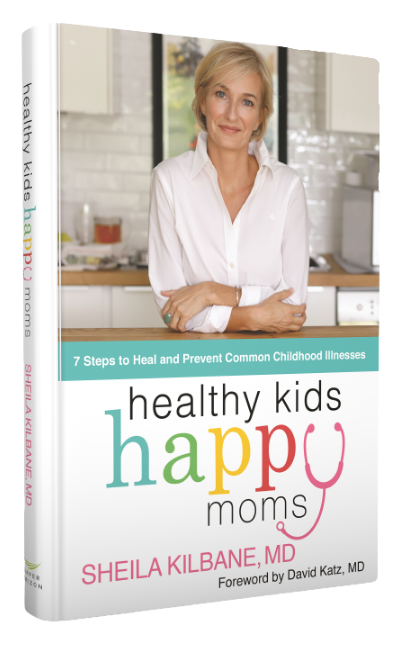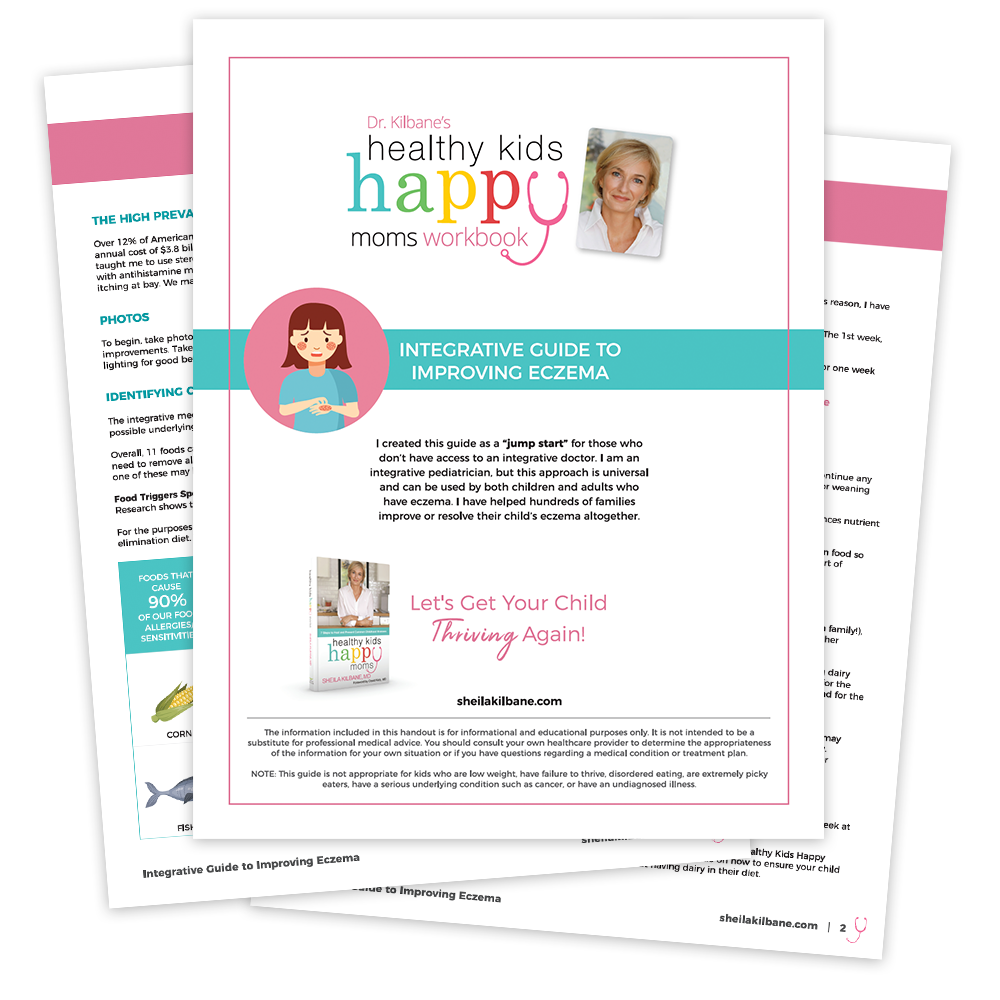When most of us think of inflammation, we see images of a hot, puffy, red, irritated, and painful body part, like when a cut gets infected. However, inflammation is more than an acute response to injury, and it’s not localized to one part of our body. Inflammation is an intricate, complex response by the whole body to what it perceives as a threat.
Here’s an explanation of the role that inflammation plays in our health, taken from my online course.
Dr. Kilbane explains the role of inflammation in healing and in illness
This means the body can have an inflammatory response for many reasons—not just from infection, but also from irritants, allergies (food and environmental), and even stress. If we think of inflammation as the body’s self-protection mode, we can understand how and why inflammation can become chronic and spread throughout the body.
To some extent, we need inflammation. If we cut a finger, we need the inflammatory process in that area to stop the bleeding. If we sprain an ankle, we need white blood cells to go to that area and begin to repair the damaged tissues. But when inflammation goes unchecked, and the body keeps mounting an inflammatory response to the same trigger, it leads to chronic inflammation and disease.
Integrative medicine teaches us that we need to look not only at why the body is responding to a trigger, but also at what that trigger is.
A Helpful Inflammation Analogy
In this illustration, the cup is the body, and the water represents inflammation in the body. You’ll see that the level inflammation is triggered from five main sources—food, environmental allergies, environmental toxins, infectious diseases and stress. The glass on the right illustrates that our bodies have a baseline level of inflammation. Notice that the glass to the left is filled to the brim with systemic inflammation.
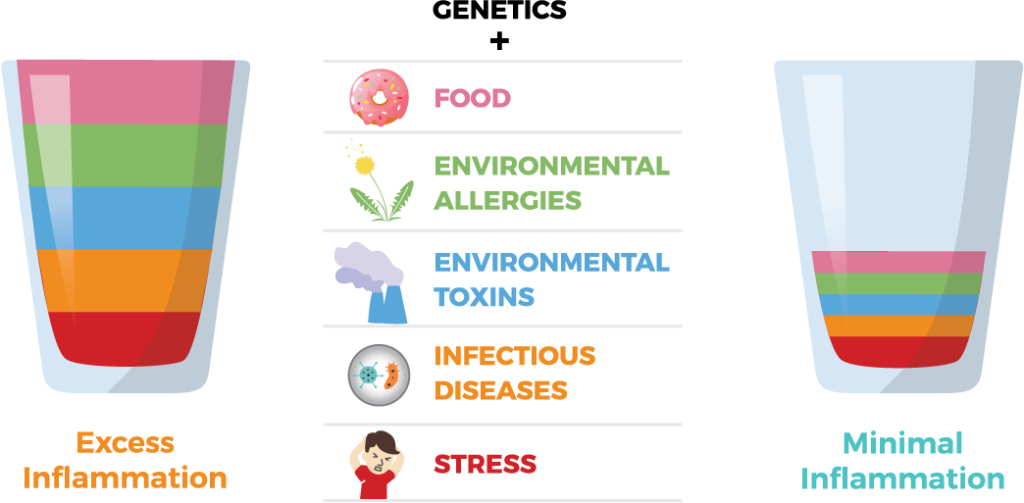
Illustrating the analogy of inflammation as a cup (the body) of water (inflammation level)
Excess inflammation leads to worsening symptoms. When we minimize inflammation, we minimize symptoms.
This excerpt from Dr. Kilbane’s online course explains the role of inflammation in recurrent illnesses
Case Study: Chronic Inflammation and Seasonal Allergies
Let’s look at a specific example of how systemic inflammation works using an eight-year-old girl named Sara. Sara had eczema, asthma, allergies, chronic runny nose and constipation, ate standard American diet (SAD) of processed foods (high sugar content and artificial dyes), had environmental allergies to trees and grasses, and lived in an area with high levels of air pollution.
You can see in the image below that she has a significant amount of systemic inflammation and her cup of is overflowing. This overload prevents her immune system from working effectively and efficiently. Since we can’t cut down all the trees and dig up all the grasses, we looked at the aspect of Sara’s environment that we have the most control over, food.
We minimized her processed and packaged foods; added more vegetables, healthy fats, and proteins; replaced high-sugar drinks with water; and removed dairy from her diet.
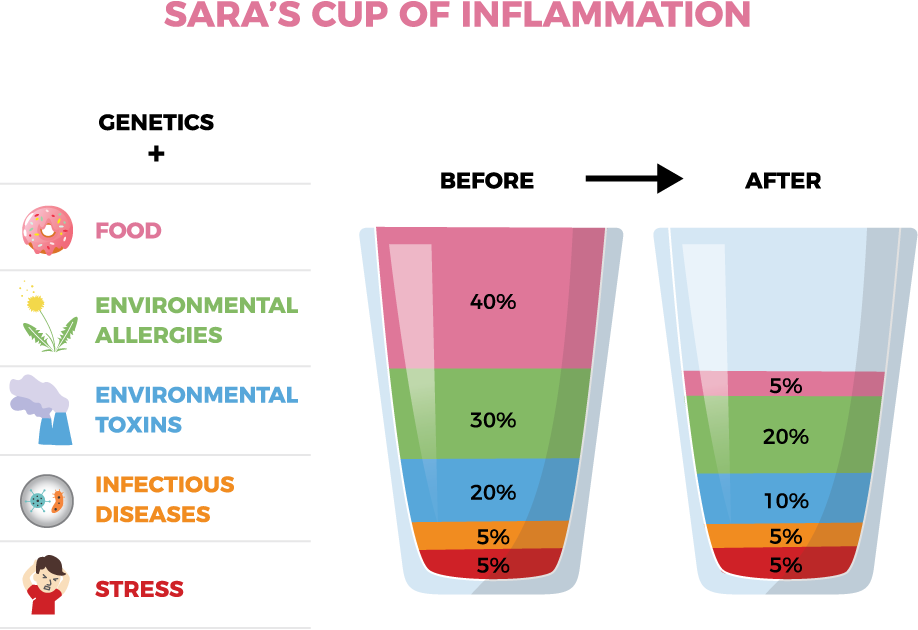
Lowering Sara’s inflammatory food intake and supporting cellular health enabled her to handle seasonal allergies with minimal discomfort and symptoms.
As we began to decrease systemic inflammation, Sara’s glass went from overflowing to half-full or less. Sara’s cellular health improved. This change somewhat decreased the impact the air pollution and environmental allergies have on her body.
When spring and fall allergy seasons come along, or Sara is exposed to more pollution or a virus, her inflammation goes up and her glass starts to fill, but now it’s only three-fourths full. For a change, she will get through allergy season with little to no allergy medication and she may not need her Albuterol rescue inhaler as much as she did the previous seasons. She no longer needs the MiraLAX she’s been taking for two years.1, 2, 3, 4, 5
The higher the amount of baseline inflammation, the longer it may take to get the inflammation under control. Sometimes this means adding more medications or supplements at first, to treat the child’s illness and to strengthen her immune system.
Sounds simple, right?
Three Major Concepts About Inflammation
The concept of inflammation and illness is simple, but the body and all of its moving parts is complex. We also have to consider all the other aspects of the child’s environment in order to bring her inflammation to a minimum.
I’d like to introduce you to three major concepts regarding inflammation, which I wish I’d learned in medical school. In my book and online course Healthy Kids, Happy Moms, I cover each of the following in depth.
- Most physical symptoms of illnesses stem from inflammation.
- Physical signs and symptoms of inflammation are often related.
- Five things trigger inflammation in our bodies:
- Food
- Environmental allergies
- Environmental toxins
- Infectious diseases
- Stress
It is the interaction of our genes with these triggers that determines our overall health. Our bodies don’t have fences. Inflammatory cells can travel anywhere in the body, from the gut to the brain to the skin. Therefore, poorly controlled asthma is related to constipation and stomach aches. Recurrent ear infections are related to uncontrolled eczema.
This also applies to our central nervous system. Have you ever noticed that your child’s behavior is worse if he has gone three or four days without a bowel movement? Or at the height of allergy season, does he seem more irritable? If a child has tics, I often see them worsen during allergy season.
Takeaways
- Inflammation serves a useful purpose; excessive inflammation can trigger additional illnesses
- The five main Five things triggers of inflammation:
- Food
- Environmental allergies
- Environmental toxins
- Infectious diseases
- Stress
- Unchecked, inflammation can cascade into all the body’s systems, contributing to everything from reflux, to chronic runny nose, eczema, recurrent ear and sinus infections, asthma, allergies, and constipation.
- The first step in my Health Kids Happy Moms Program for decreasing systemic inflammation is my free Mini Cleanse for Kids. You can follow the simple steps as a family and have fun with it!
- The second step in my Healthy Kids Happy Moms Program for decreasing systemic inflammation is to start the foundational supplements I have outlined in my downloadable (free) Supplement Guide.
- My Healthy Kids, Happy Moms Course has a great deal more on this topic
Schedule a FREE 15-minute informational call with my practice’s patient care specialist to discuss your child’s issues.
References:
- https://www.atsjournals.org/doi/full/10.1164/ajrccm.162.4.9912111
- https://onlinelibrary.wiley.com/doi/10.1111/j.1398-9995.2001.00931.x
- https://www.sciencedirect.com/science/article/abs/pii/S030105461200211X?via%3Dihub
- https://onlinelibrary.wiley.com/doi/full/10.1034/j.1398-9995.2000.00122.x
- https://www.nejm.org/doi/full/10.1056/nejm199810153391602
